Related Research Articles

Natural gas is a naturally occurring mixture of gaseous hydrocarbons consisting primarily of methane in addition to various smaller amounts of other higher alkanes. Low levels of trace gases like carbon dioxide, nitrogen, hydrogen sulfide, and helium are also usually present. Methane is colorless and odorless, and the second largest greenhouse gas contributor to global climate change after carbon dioxide. So odorizers such as mercaptan are commonly added to natural gas supplies for safety so that leaks can be readily detected.
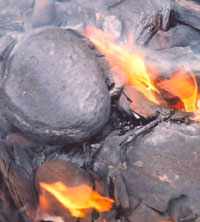
Oil shale is an organic-rich fine-grained sedimentary rock containing kerogen from which liquid hydrocarbons can be produced. In addition to kerogen, general composition of oil shales constitutes inorganic substance and bitumens. Based on their deposition environment, oil shales are classified as marine, lacustrine and terrestrial oil shales. Oil shales differ from oil-bearing shales, shale deposits that contain petroleum that is sometimes produced from drilled wells. Examples of oil-bearing shales are the Bakken Formation, Pierre Shale, Niobrara Formation, and Eagle Ford Formation. Accordingly, shale oil produced from oil shale should not be confused with tight oil, which is also frequently called shale oil.

Kerogen is solid, insoluble organic matter in sedimentary rocks. It consists of a variety of organic materials, including dead plants, algae, and other microorganisms, that have been compressed and heated by geological processes. Altogether kerogen is estimated to contain 1016 tons of carbon. This makes it the most abundant source of organic compounds on earth, exceeding the total organic content of living matter 10,000-fold.
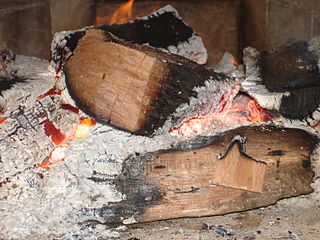
The pyrolysis process is the thermal decomposition of materials at elevated temperatures, often in an inert atmosphere. Temperature can be understood as thermal vibration. At high temperatures, excessive vibration causes long chain molecules to break into smaller molecules. The word is coined from the Greek-derived elements pyro "fire", "heat", "fever" and lysis "separating".
Shale oil is an unconventional oil produced from oil shale rock fragments by pyrolysis, hydrogenation, or thermal dissolution. These processes convert the organic matter within the rock (kerogen) into synthetic oil and gas. The resulting oil can be used immediately as a fuel or upgraded to meet refinery feedstock specifications by adding hydrogen and removing impurities such as sulfur and nitrogen. The refined products can be used for the same purposes as those derived from crude oil.
Coal liquefaction is a process of converting coal into liquid hydrocarbons: liquid fuels and petrochemicals. This process is often known as "Coal to X" or "Carbon to X", where X can be many different hydrocarbon-based products. However, the most common process chain is "Coal to Liquid Fuels" (CTL).
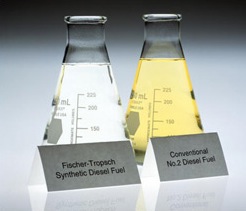
Synthetic fuel or synfuel is a liquid fuel, or sometimes gaseous fuel, obtained from syngas, a mixture of carbon monoxide and hydrogen, in which the syngas was derived from gasification of solid feedstocks such as coal or biomass or by reforming of natural gas.

The Karrick process is a low-temperature carbonization (LTC) and pyrolysis process of carbonaceous materials. Although primarily meant for coal carbonization, it also could be used for processing of oil shale, lignite or any carbonaceous materials. These are heated at 450 °C (800 °F) to 700 °C (1,300 °F) in the absence of air to distill out synthetic fuels–unconventional oil and syngas. It could be used for a coal liquefaction as also for a semi-coke production. The process was the work of oil shale technologist Lewis Cass Karrick at the United States Bureau of Mines in the 1920s.
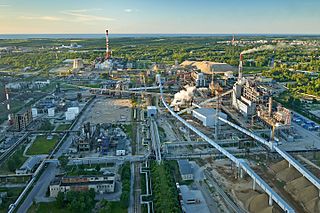
The oil shale industry is an industry of mining and processing of oil shale—a fine-grained sedimentary rock, containing significant amounts of kerogen, from which liquid hydrocarbons can be manufactured. The industry has developed in Brazil, China, Estonia and to some extent in Germany and Russia. Several other countries are currently conducting research on their oil shale reserves and production methods to improve efficiency and recovery. Estonia accounted for about 70% of the world's oil shale production in a study published in 2005.

Shale oil extraction is an industrial process for unconventional oil production. This process converts kerogen in oil shale into shale oil by pyrolysis, hydrogenation, or thermal dissolution. The resultant shale oil is used as fuel oil or upgraded to meet refinery feedstock specifications by adding hydrogen and removing sulfur and nitrogen impurities.

Environmental impact of the oil shale industry includes the consideration of issues such as land use, waste management, and water and air pollution caused by the extraction and processing of oil shale. Surface mining of oil shale deposits causes the usual environmental impacts of open-pit mining. In addition, the combustion and thermal processing generate waste material, which must be disposed of, and harmful atmospheric emissions, including carbon dioxide, a major greenhouse gas. Experimental in-situ conversion processes and carbon capture and storage technologies may reduce some of these concerns in future, but may raise others, such as the pollution of groundwater.

The history of the oil shale industry started in ancient times. The modern industrial use of oil shale for oil extraction dates to the mid-19th century and started growing just before World War I because of the mass production of automobiles and trucks and the supposed shortage of gasoline for transportation needs. Between the World Wars oil shale projects were begun in several countries.
Oil shale gas is a synthetic non-condensable gas mixture (syngas) produced by oil shale thermal processing (pyrolysis). Although often referred to as shale gas, it differs from the natural gas produced from shale, which is also known as shale gas.
Chattanooga Corporation is an American developer of technology for unconventional oil, particularly for tar sands and shale oil extraction.
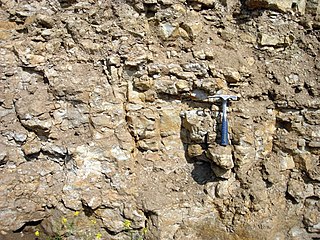
There are two kinds of oil shale in Estonia, both of which are sedimentary rocks laid down during the Ordovician geologic period. Graptolitic argillite is the larger oil shale resource, but, because its organic matter content is relatively low, it is not used industrially. The other is kukersite, which has been mined for more than a hundred years. Kukersite deposits in Estonia account for 1% of global oil shale deposits.
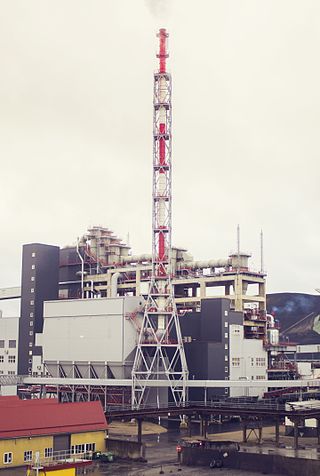
The Galoter process is a shale oil extraction technology for the production of shale oil, a type of synthetic crude oil. In this process, the oil shale is decomposed into shale oil, oil shale gas, and spent residue. Decomposition is caused by mixing raw oil shale with hot oil shale ash generated by the combustion of carbonaceous residue (semi-coke) in the spent residue. The process was developed in the 1950s, and it is used commercially for shale oil production in Estonia. There are projects for further development of this technology and expansion of its usage, e.g., in Jordan and the USA.
The Alberta Taciuk process is an above-ground dry thermal retorting technology for extracting oil from oil sands, oil shale and other organics-bearing materials, including oil contaminated soils, sludges and wastes. The technology is named after its inventor William Taciuk and the Alberta Oil Sands Technology and Research Authority.
The Lurgi–Ruhrgas process is an above-ground coal liquefaction and shale oil extraction technology. It is classified as a hot recycled solids technology.
Hydrothermal liquefaction (HTL) is a thermal depolymerization process used to convert wet biomass, and other macromolecules, into crude-like oil under moderate temperature and high pressure. The crude-like oil has high energy density with a lower heating value of 33.8-36.9 MJ/kg and 5-20 wt% oxygen and renewable chemicals. The process has also been called hydrous pyrolysis.
A hydrogen-donor solvent is hydrocarbon that transfers hydrogen to hydrogen-poor substrates, such as coal. The hydrogen-poor substrates could be a solute or suspension. The classic hydrogen-donor solvent (or just donor solvent) is tetrahydronaphthalene, which converts to naphthalene by transfer of two equivalents of H2 to the substrate. The enthalpy of hydrogenation of naphthalene is relatively low, which allows the tetrahydronaphthalene to be regenerated in the presence of high pressure H2. Catalysts are often used, such as molybdenum disulfide. Related hydrogen donor solvents or solvent components are dihydrophenanthrene and tetrahydroquinoline.
References
- ↑ Gorlov, E.G. (October 2007). "Thermal Dissolution Of Solid Fossil Fuels". Solid Fuel Chemistry. Allerton Press, Inc. 41 (5): 290. doi:10.3103/S0361521907050047. ISSN 1934-8029. S2CID 73546863.
- ↑ Luik, Hans (2009-06-08). Alternative technologies for oil shale liquefaction and upgrading (PDF). International Oil Shale Symposium. Tallinn, Estonia: Tallinn University of Technology. Archived from the original (PDF) on 2012-02-24. Retrieved 2009-06-09.
- ↑ Lu, Hai-Yun; Wei, Xian-Yong; Yu, Rui; Peng, Yao-Li; Qi, Xing-Zhen; Qie, Li-Man; Wei, Qing; Lv, Jie; Zong, Zhi-Min; Zhao, Wei; Zhao, Yun-Peng; Ni, Zhong-Hai; Wu, Lin (2011-05-20). "Sequential Thermal Dissolution of Huolinguole Lignite in Methanol and Ethanol". Energy & Fuels . American Chemical Society. 25 (6): 2741. doi:10.1021/ef101734f.